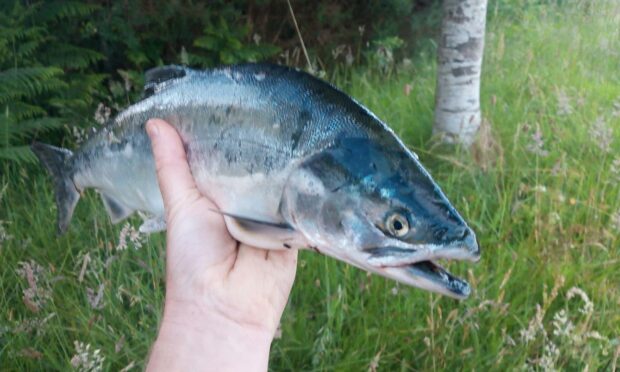Anglers across Scotland have been asked to report catches and sightings of a predatory species of pink salmon.
Pink salmon native to Pacific Ocean waters have spread to parts of northern Europe after being released into rivers in Russia in the 1960s. They are now the dominant species there – prompting fears they could harm the native Atlantic salmon here.
Now they have been caught in the River Ness, and the fishery board is asking others to be vigilant and report any sightings.
There is little known about how the new species will impact the native Atlantic salmon, but competition for food and habitat may harm established species.
Pacific pink salmon captured on the River Ness this evening. If you catch please dispatch, report asap and we'll take samples. Guidance, app and topic sheet are available here: https://t.co/o3kpfQ7R8n @fms_scotland @ProfColinBean @EvaThorstad @GarethDDaviesEA @Fish_Ecol_NE_EA pic.twitter.com/D3wS1j6l2s
— Ness Fishery Board (@FishtheNess) June 30, 2021
In 2017 there were “unprecedented numbers” of the fish were found in rivers including the Ness and Dee in 2017, and high numbers were again seen in 2019.
Norway has already recorded an record influx of Pacific salmon who are fast out-competing native species this year.
Director of the Ness District Salmon Fishery Board, Chris Conroy, said: “Our colleagues in Norway have seen a huge rise in the number of Pacific pink salmon in their waters so we expect to see a significant increase in numbers here in Scotland.”
Number of native wild salmon “falls dramatically”
Fisheries Management Scotland (FMS) has said the number of native wild Atlantic salmon returning to their spawning grounds in the UK had “fallen dramatically” since the 1970s, and the invasive species was seen as an “additional threat” to its survival.
Mr Conroy added: “We are keen to gather as much information as possible so we can assess whether they will have an impact on our native Atlantic salmon.”
Pink salmon have a fixed, two-year life cycle and generally spawn in summer.
FMS said that due to this life cycle, they may appear again in Scottish rivers this year following the previous sightings in 2017 and 2019.
The organisation is working closely with the Scottish Government and public agencies to try and better understand the threats posed by the invasive species to native fish stocks.
